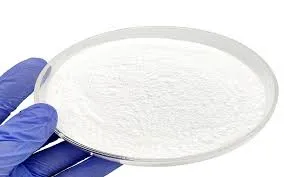Understanding Active Pharmaceutical Ingredients A Deep Dive into Definition and Relevance
Active Pharmaceutical Ingredients (APIs) are the critical components in medications that produce their intended therapeutic effects. As the backbone of pharmaceutical products, APIs play a pivotal role in determining the effectiveness, safety, and quality of drugs. With the growing complexity of drug formulations and the increasing demand for novel therapies, a clear understanding of what APIs are and how they are regulated is essential for all stakeholders within the healthcare system.
What is an Active Pharmaceutical Ingredient?
An Active Pharmaceutical Ingredient is defined as any substance or mixture of substances intended to be used in the manufacture of a pharmaceutical dosage form, which, when administered to a patient, provides pharmacological activity or other direct effect in the diagnosis, cure, mitigation, treatment, or prevention of disease. Simply put, APIs are the parts of drug products that are responsible for the intended therapeutic action.
APIs can be derived from natural sources, such as plants and animals, or produced synthetically in laboratories. The latter has become increasingly prevalent due to the ability to produce large quantities of consistent quality. The production of APIs is a highly regulated process, as any impurities or deviations from established guidelines can compromise drug safety and effectiveness.
Importance of APIs in Drug Development
The development of APIs is a complex process that involves several stages, including discovery, development, preclinical testing, clinical trials, and regulatory approval. The discovery phase often involves identifying potential compounds that can be further developed into APIs. These compounds undergo a rigorous process of screening, during which their pharmacological properties are evaluated.
Once a promising candidate is identified, it enters the development stage, where formulations are created to ensure the drug can be effectively delivered to the body. This phase includes extensive testing to determine the optimal dosage, delivery method, and stability of the API.
The regulatory framework governing APIs varies by geographical region but generally includes stringent guidelines established by organizations such as the Food and Drug Administration (FDA) in the United States and the European Medicines Agency (EMA) in Europe. These agencies ensure that all aspects of production adheres to Good Manufacturing Practices (GMP) to guarantee that the APIs are safe, effective, and free of contaminants.
definition api active pharmaceutical ingredient

Regulatory Aspects and Quality Control
The regulatory landscape surrounding APIs is crucial for maintaining public safety. Pharmaceutical manufacturers must conduct thorough testing and documentation, detailing the manufacturing process, quality control measures, and stability studies. Quality assurance is vital, as APIs must meet defined standards before they can be incorporated into drug products.
The regulations also dictate how manufacturers should respond to any deviations or issues during production. The goal is to identify potential problems before they affect the end product, ensuring that the APIs consistently meet quality standards.
Furthermore, the increasing globalization of the pharmaceutical supply chain presents unique challenges. Many APIs are manufactured overseas, making quality control and adherence to regulatory standards even more critical. Regulatory agencies have developed guidelines and monitoring systems to oversee the quality of imported APIs.
The Future of APIs
As medicine continues to evolve, the role of APIs will likely expand. Advances in biotechnology, personalized medicine, and targeted therapies are paving the way for more sophisticated APIs tailored to specific patient needs. The rise of biologics, which include proteins, monoclonal antibodies, and nucleic acids, exemplifies how APIs are adapting to modern medical paradigms.
Moreover, with the rapid advancement of technology and increased emphasis on patient-centric approaches, the demand for innovative APIs that can deliver improved efficacy and reduced side effects is set to rise.
Conclusion
Active Pharmaceutical Ingredients are fundamental to the development of safe and effective medications. Understanding their definition, production processes, regulatory considerations, and future possibilities is essential for anyone involved in the pharmaceutical industry, healthcare, or research. As the world of medicine continues to advance, the importance of high-quality APIs in ensuring therapeutic success and patient safety will remain as critical as ever. The ongoing collaboration between regulatory bodies, manufacturers, and researchers will be vital in navigating the complexities of API development, ultimately enhancing the quality of healthcare worldwide.

